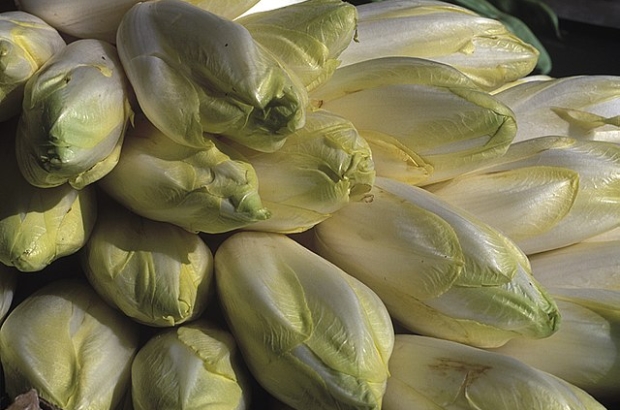- Daily & Weekly newsletters
- Buy & download The Bulletin
- Comment on our articles
Belgian chicory farm revives an ancient process of cultivation
Chicory lovers will be more than aware that March is the month when the divisive vegetable is harvested, but this year will be a special harvest for connoisseurs of the root that was once the king of Belgian agriculture.
This March, fans of the vegetable, also know as Belgian endive, can try a heritage specimen cultivated by a process that is rarely used today. However, at the Ferme à l'Arbre de Liège, located in Lantin, it's one that is still going strong. Chicory lovers can now have a guided tour of the greenhouses to see the rare specimens cultivated to have a less bitter taste.
"It is an excellent product, which does not taste at all the same as the hydroculture chicory or the potting soil chicon because it is much tastier, less bitter, more tender, tighter, so it is an exceptional product and is no longer cultivated," says Michel Paque, director of the farm.
“We must first remove the earth and then we arrange the roots next to each other, separating them each time by a layer of earth,” says the farm’s head gardener Philippe Altmann. “The chicories are flooded so that they have a sufficient supply of water until the end of their growth. We then return the earth that has been removed and cover the chicories."
The roots are buried in the earth and covered with an oilcloth so the vegetables do not get the slightest ray of light: "They must be in total darkness so that they are not green,” Altmann says. “And if they took the light, they would not be edible because they would be too bitter."
In December, the roots were planted and then buried in the ground until the harvest, which is imminent. "We are dependent on the external climate," explains Michel Paque. "We don't use artificial heat, it's done in the earth, it grows at its own pace, but it's scheduled for the end of the month."
This year was a trial run, the farm was limited to 2,000 roots. Next year, it plans to cultivate the chicory throughout the winter.


















